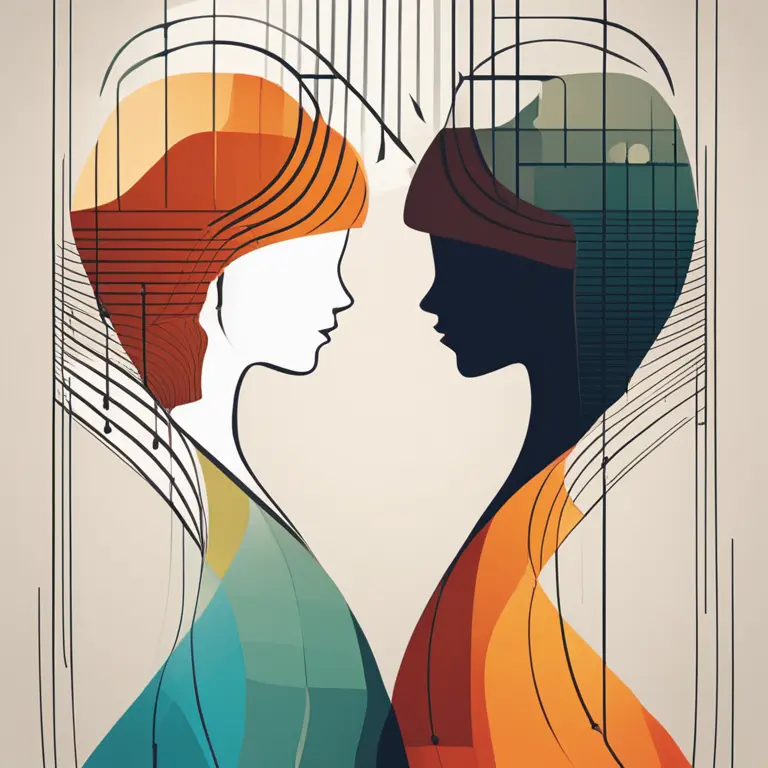
The Essence of Biorhythms: Life's Natural Rhythms
Delve into the concept of biorhythms and discover how these innate cycles can influence your physical, emotional, and intellectual faculties.
article by Adrian Wallace
Introduction to Biorhythms
Every living creature is subject to various cycles that ebb and flow with time. In humans, these cycles are known as biorhythms. Biorhythms are hypothesized patterns of changes in one's physical, emotional, and intellectual abilities believed to affect numerous aspects of life. Emerging from the early 20th-century works of Dr. Wilhelm Fliess and later expanded by Dr. Hermann Swoboda and Dr. Alfred Teltscher, the idea suggests that our daily lives are influenced by rhythmic biological cycles.

The Triple Cycles Theory
Biorhythms are traditionally divided into three core cycles: physical, emotional, and intellectual. The physical cycle, with a period of 23 days, is said to influence factors such as strength, coordination, and well-being. The emotional cycle, a 28-day wave, purportedly impacts mood, creativity, and sensitivity. Last but not least, the intellectual cycle, which turns over a 33-day span, is thought to affect cognitive functions, alertness, and logical reasoning. These cycles are calculated from birth, and each has its highs, lows, and critical phases.

Modern Interpretation and Use
While biorhythms were most popular in the late 20th century, there is a modern resurgence in interest due to the holistic wellness movement. With advancements in technology, there are now software and apps that can chart an individual's biorhythms, providing insights for personal development or timing for activities. Interest in biorhythms has expanded beyond personal curiosity, with some business professionals and athletes considering their cycles when planning important events or competitions.

Analyzing Biorhythmic Compatibility
Not limited to personal introspection, biorhythms are also used in assessing compatibility between individuals. Some relationship counselors and compatibility experts analyze partners' biorhythmic charts to predict the potential synchronicity and natural alignment of their rhythms. They argue that understanding the congruity of two people's biorhythms can help anticipate the dynamics of a relationship.

Scientific Scrutiny and Skepticism
Whilst the concept of biorhythms has captivated many, it remains a controversial subject in scientific circles. Critics argue that there is a lack of empirical evidence supporting biorhythms as a predictive tool for behavior or performance outcomes. Many regard biorhythm theory as a pseudoscience, urging individuals to be cautious when considering predictions based on this system. Despite this, biorhythms endure in alternative practices, likely due to the inherent human fascination with patterns and future predictions.
Biorhythms in the Digital Age
In the digital age—where quantified self-movement and personal analytics are on the rise—biorhythms gain new forms of expression. People are increasingly tracking large amounts of personal data, including sleep patterns, physical activity, mood, and cognitive performance, often without labeling these as "biorhythms." However, the underlying concept—that our abilities fluctuate in predictable cycles—echoes the essence of biorhythmic theory.
Embracing Life's Cycles
Whether or not one fully accepts biorhythm theory, the idea encourages an awareness of personal patterns and cycles. This can foster a better understanding of one's own body and mind, and potentially lead to more harmonious living by acknowledging the natural ebb and flow of human capabilities.
Published: 1/30/2024
Modified: 1/30/2024
More predictions
Come back here soon to learn more about yourself and your future


The Rhythms Within: An Insight into Biorhythms
Discover the science and philosophy behind biorhythms, the cyclical patterns our bodies follow, in connection with our physical, emotional, and intellectual states.


The Rhythms Concept: A Guide to Biorhythms
Discover the intriguing concept of biorhythms: the cyclic patterns influencing our physical, emotional, and intellectual states.


Unlocking The Biorhythms Guide
Delve into the fascinating world of biorhythms to learn how they influence your physical, emotional, and intellectual states, potentially shaping your daily life and decisions.